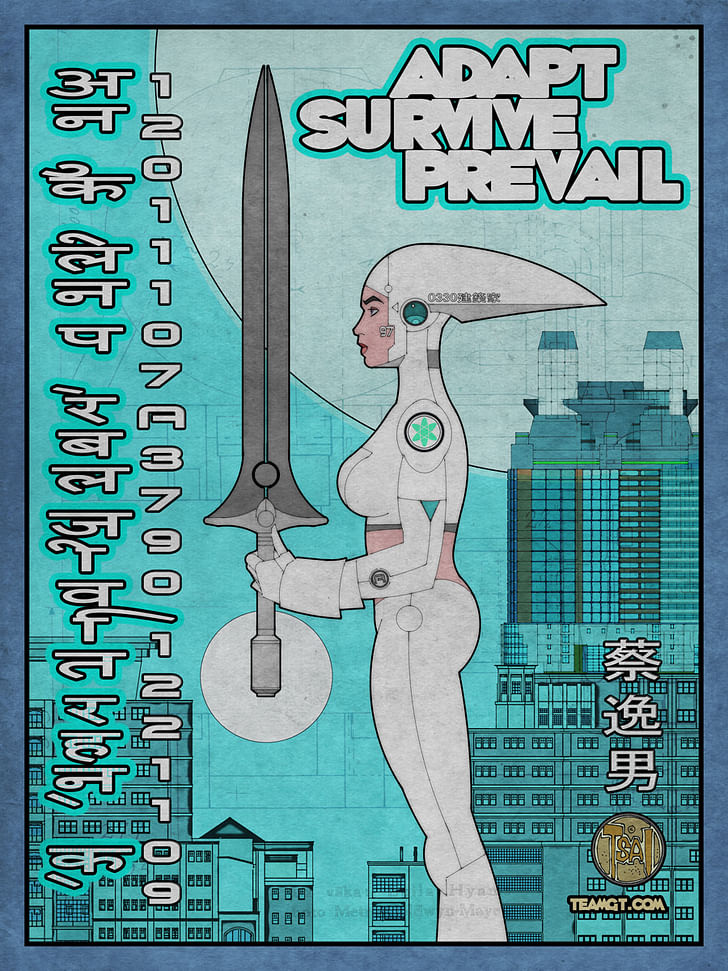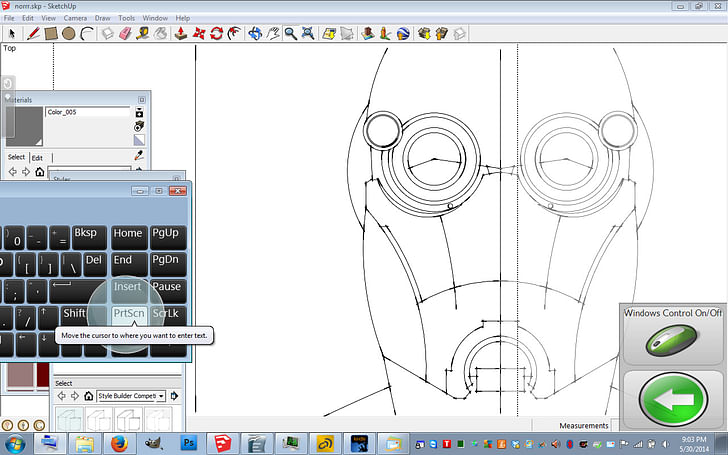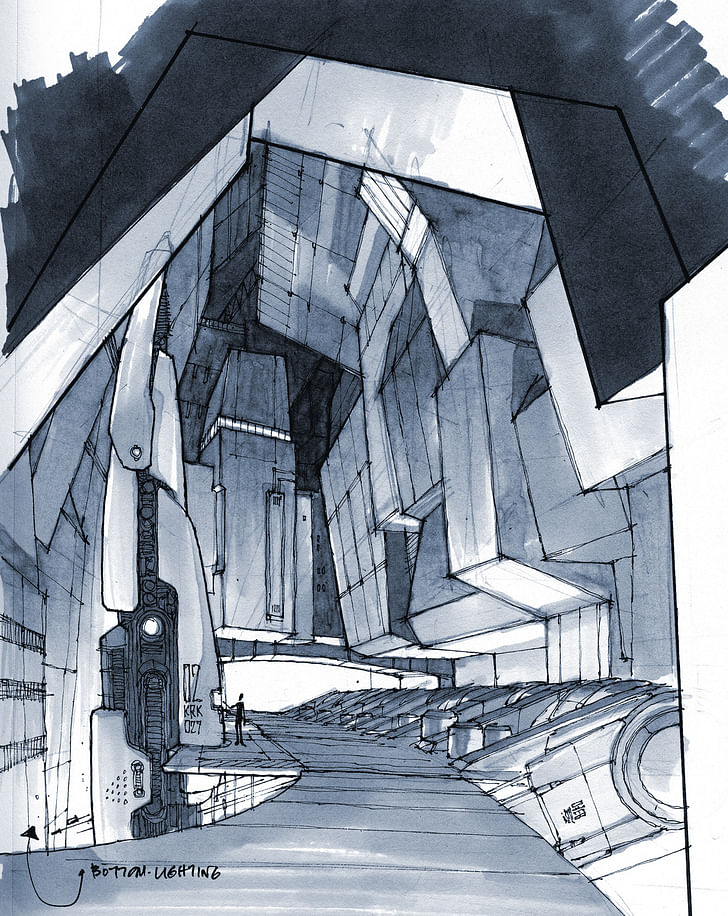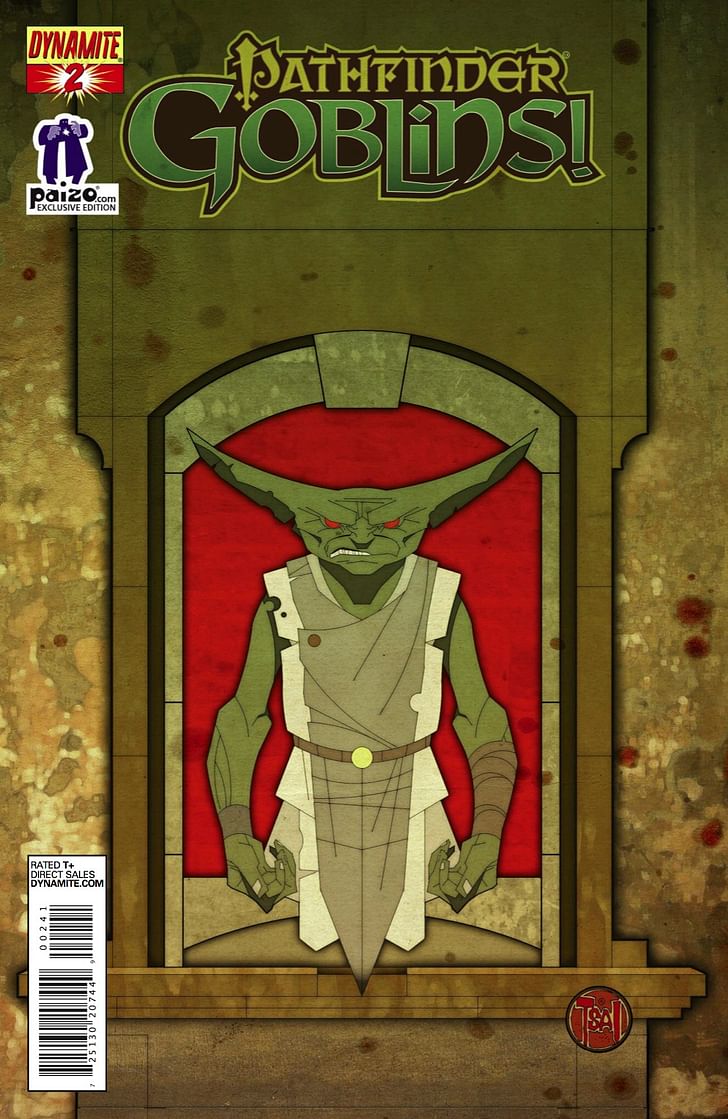

Working out of the Box is a series of features presenting architects who have applied their architecture backgrounds to alternative career paths.
In this installment, we're talking with Francis Tsai of Francis Tsai Illustration and Concept Design.
Are you an architect working out of the box? Do you know of someone that has changed careers and has an interesting story to share? If you would like to suggest an (ex-)architect, please send us a message.
Francis Tsai’s love of drawing led him into the architecture profession, and then straight out of it. Trained as an architect in the early 1990s, when hand-drawing was still the norm and digital design was a niche practice, Tsai left architecture after a few years to work as an artist for Presto Studios, a computer-game developer based in San Diego. The shift suited him: his minute architectural drafting skills, combined with a love for science-fiction, formed the foundation for artwork with Marvel Comics, Magic: The Gathering and games in the Myst and Tomb Raider series.

It was in 2010, after Tsai had established himself as a successful freelance artist, that he was diagnosed with ALS, commonly known as Lou Gehrig’s disease. Amyotrophic lateral sclerosis eventually leads to weakness or atrophy in the entire body, preventing any voluntary movement (other than the eyes) or speech. The disease progresses at different rates, depending on the individual, but by 2012 Tsai was limited to a wheelchair and unable to do more than smile. As his movements became more and more restricted, however, Tsai worked doggedly to adapt his drawing techniques — at first using his toes and an iPad to sketch, and now, most remarkably, his eyes. With the “Eye Gaze” technology, which uses infrared cameras to track eye movements and translate them into commands on a computer, Tsai can manipulate various softwares, allowing him to speak, write, and of course, draw.

Using programs like Adobe Photoshop and SketchUp, Tsai is able to continue making his signature drawings, with what may become his signature method. The Tobii eye-gaze system that Tsai uses to draw requires a pixel-perfect-precision unnecessary for most anyone else in a similar situation, making Tsai a pioneer. He publishes work to his personal blog and Facebook page, is a vocal advocate of the Eye Gaze technology for other similarly-affected people, and has published freelance work done with the Tobii system. Our “Working out of the Box” feature with Tsai looks into how design’s mental processes change with physical ability, while the drive to create remains the same.
h/t to Omar L. Gallaga, who previously profiled Francis Tsai for statesman.com.

Where did you study architecture?
I studied architecture at the University of Texas in Austin. I received a Master's degree in 1993.
At what point in your life did you decide to pursue architecture?
It was during my undergraduate years at UT. At the time, I was studying chemistry and hating every minute of it. I took some studio art classes that the School of Fine Arts offered for non-art majors and really enjoyed using a different part of my brain. As a kid I had always loved drawing and designing things, but I was always told that was stuff I could do in my spare time once I got a “real” job. Taking the art classes was a breath of fresh air. One of my School of Fine Arts classmates was a student in the architecture school, and when I expressed an interest, she invited me to visit her design studio class. I was amazed at what I saw - sketches, detail drawings, plan, section, and elevation drawings, detailed basswood models. I felt totally thrilled and energized by what these students were working on and I really wanted to be part of it. After finishing my chemistry degree, I enrolled in the School of Architecture's First Professional Master’s Degree Program.


When did you decide to stop pursuing architecture? Why?
A few years after graduating, I went through a bit of a reality check once I started working. I discovered that the things I loved most about architecture school - the design process, the visual communication exercises - actually formed a pretty small part of the day's work, at least at the firms where I worked. I knew that I still hadn't really found the perfect career niche, but I knew it was out there.
I discovered that the things I loved most about architecture school - the design process, the visual communication exercises - actually formed a pretty small part of the day's workIn 1997, I married Linda Glaze, a classmate from the UT School of Architecture. We visited San Diego for our honeymoon, a trip that happened to coincide with the Comic Con comic book convention. We liked it so much we decided to relocate there. The economy was hopping and we both found jobs easily.
Several months later, we attended an open house of a local independent game developer called Presto Studios. They specialized in creating photorealistic point and click adventure games, a genre probably best known for a game called Myst. It’s a game that Linda and I had spent hours playing together back in Austin. The studio was filled with computers and artwork, film-quality conceptual designs required for the games Presto was creating. I wanted more than anything to be a part of it, but figured my complete lack of experience and knowledge of 3D modeling software would eliminate me from the category of potential employee. At Linda's urging, I went back in after the tour and introduced myself to one of the owners of the company. He seemed interested in my architecture education and love of all things nerdy, He invited me to return a few days later for an interview.
I was a man with a mission when we got home. I assembled every piece of art I could find that I thought had any relevance at all - architecture projects, but also all the aliens, robots, space ships, superheroes, gadgets and worlds I had spent years creating in my spare time. It was a lot. I probably should have edited my portfolio somewhat but I didn't want to leave anything to chance. For the actual interview I wore my best suit, which probably served the sole purpose of showing what a huge dork I was. It was a wonder they hired me, but I'm glad to say they did. As Linda would observe later, I had found my tribe.


Describe your most recent job.
Well, at the moment I suppose you could consider me retired thanks to the disease (Amyotrophic Lateral Sclerosis). Before that, I was a freelance illustrator and concept designer. A lot of my work consisted of creating designs and illustrations for various video My architecture education was a huge benefit in doing video game design work. Creating compelling environments and experiences is a big part of game development.game companies, but I also did work for comic book publishers, role playing games, trading card games, TV commercials and film.
What skills did you gain from architecture school that have contributed to your current success? Specifically in regards to ALS, how has your architectural training influenced the way you work?
My architecture education was a huge benefit in doing video game design work. Creating compelling environments and experiences is a big part of game development. Having a solid background in architectural history is also very useful.
In terms of having ALS, not sure what to say. I'm pretty limited in what I can do now, but the subject matter tends towards what I liked as a kid - robots and science fiction.

How has your relationship to design and illustration changed since using the Eye Gaze software?
It’s a lot more deliberate and planned, almost more graphic design than drawing and painting. I really miss the gestural, painterly quality that comes from creating with your hands.
Do you have an interest in returning to architecture?
Nah, I'd be a terrible architect. I think I was told this at least once in school. There was too much science fiction in my stuff!

Former Managing Editor and Podcast Co-Producer for Archinect. I write, go to the movies, walk around and listen to the radio. My interests revolve around cognitive urban theory, psycholinguistics and food.Currently freelancing. Be in touch through longhyphen@gmail.com
3 Comments
I worked with Francis Tsai at Rockstar games and he was one of the people who inspired me to study architecture -
this is incredibly inspirational.
Love reading the articles in this series “Working Out of the Box”. This spotlight on Francis Tsai and his journey from architect to freelance artist is truly inspiring. Mr. Tsai is a role model for architects, for artists, or for people in any profession.
Block this user
Are you sure you want to block this user and hide all related comments throughout the site?
Archinect
This is your first comment on Archinect. Your comment will be visible once approved.